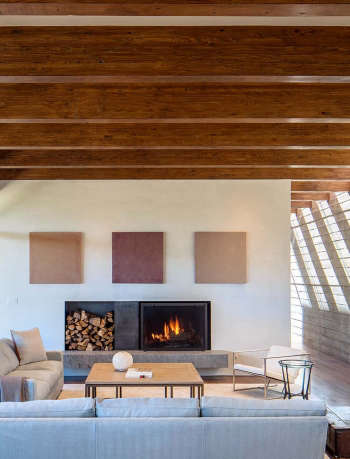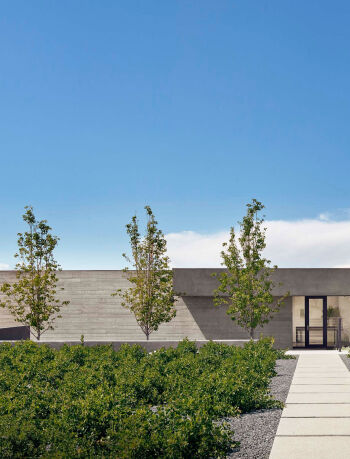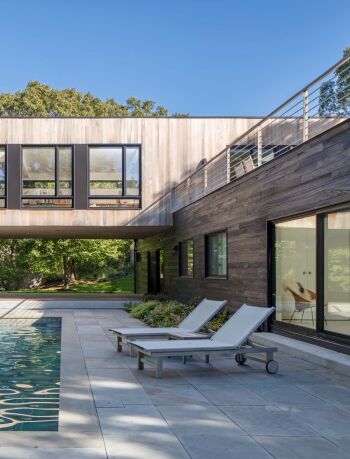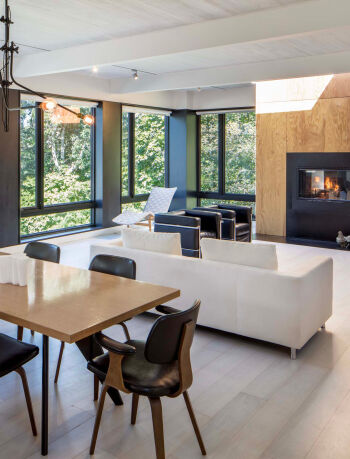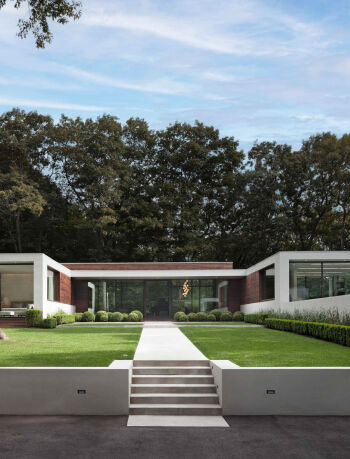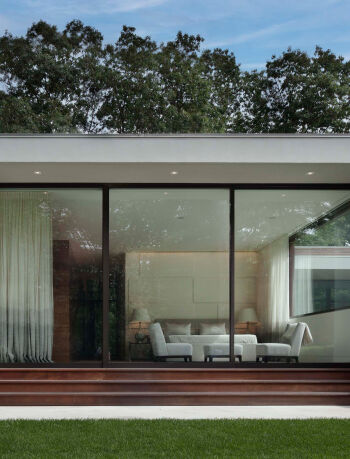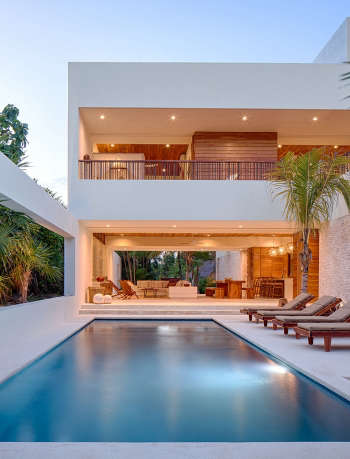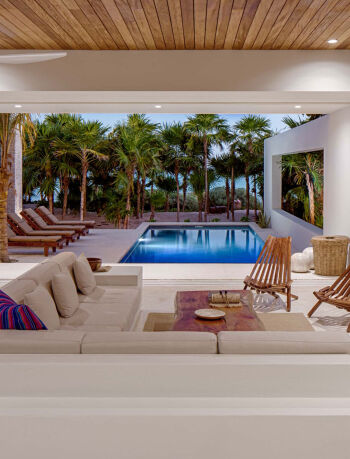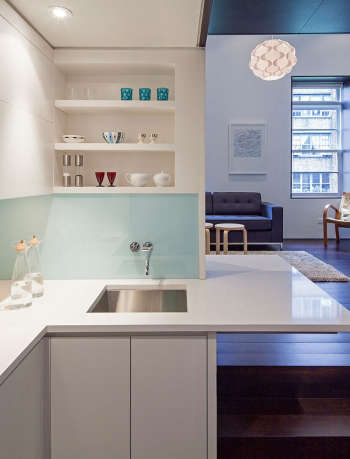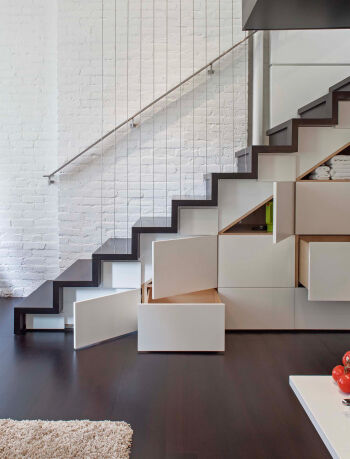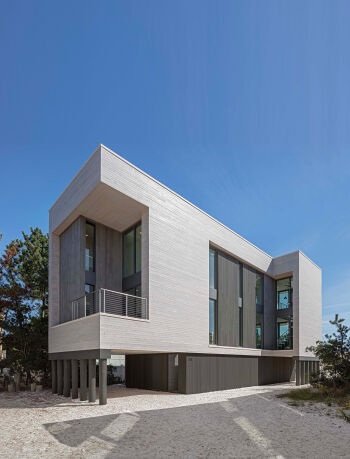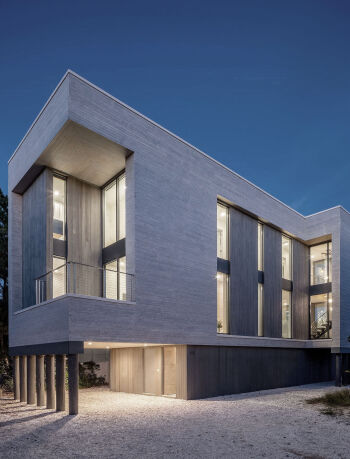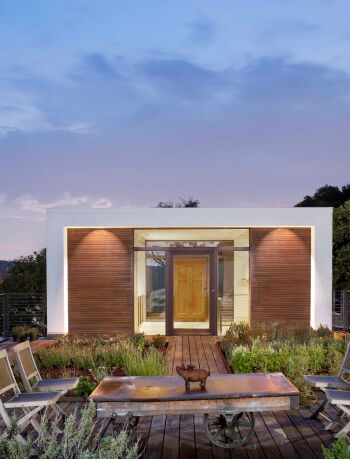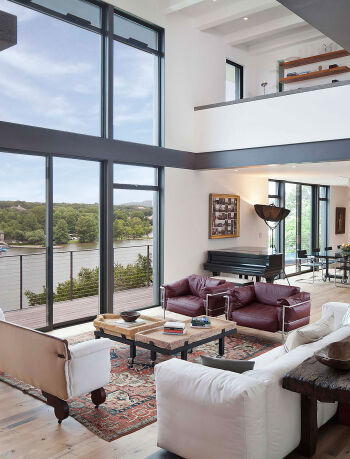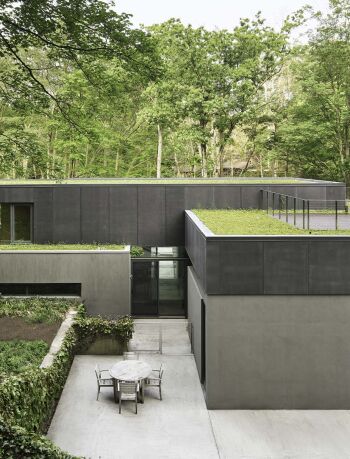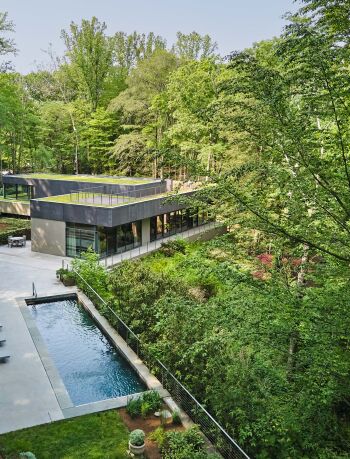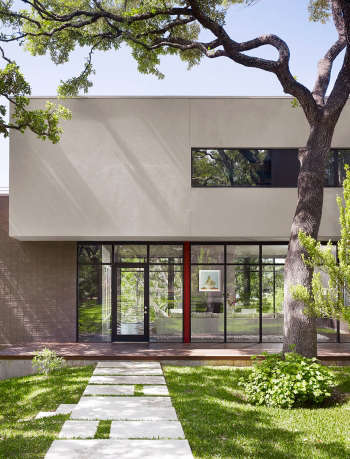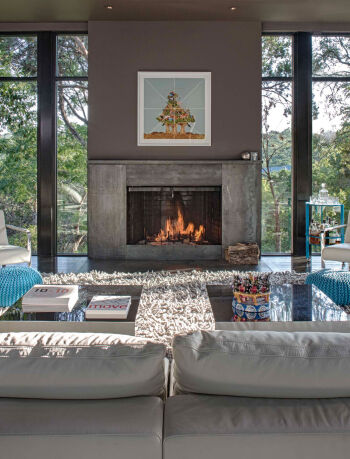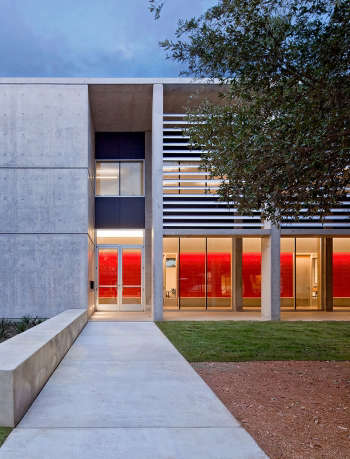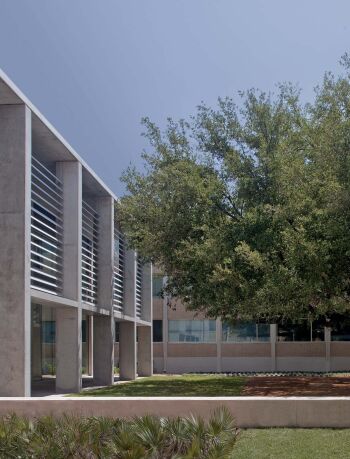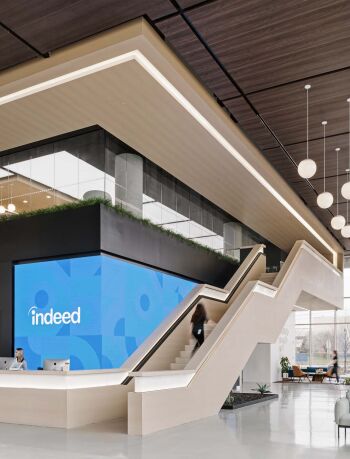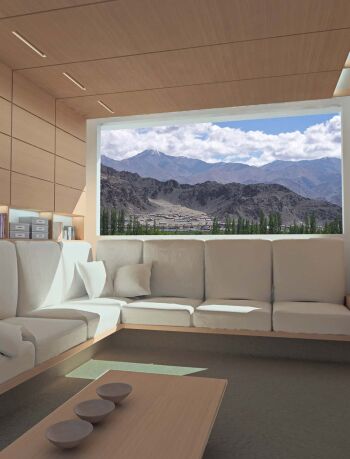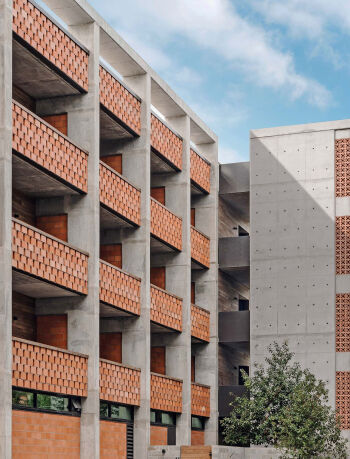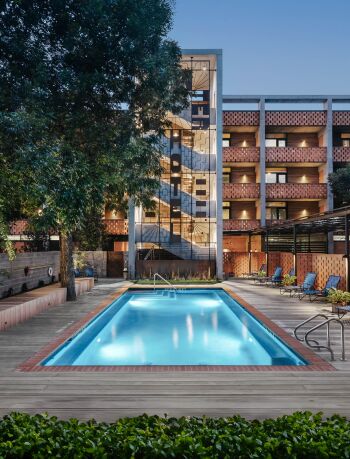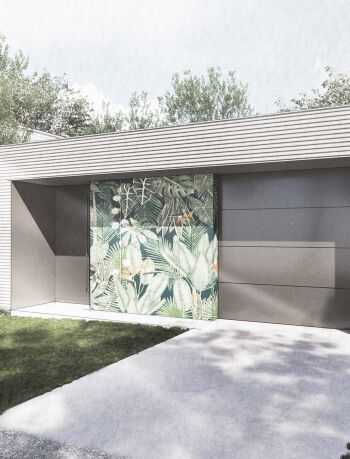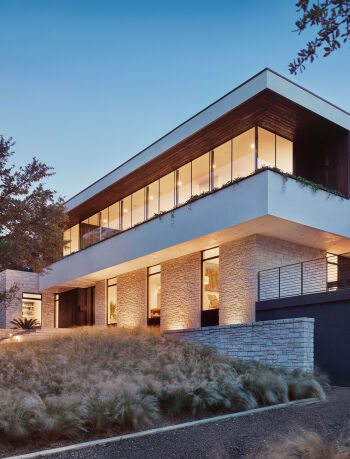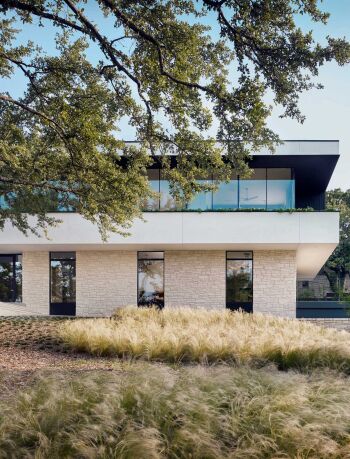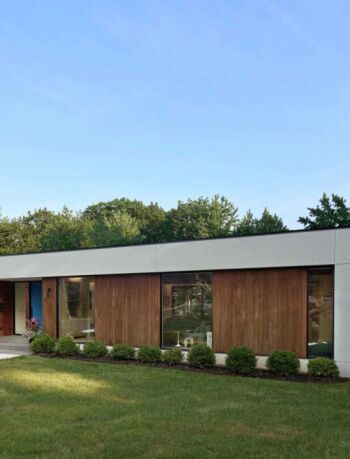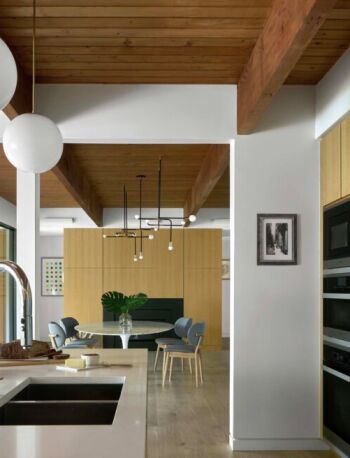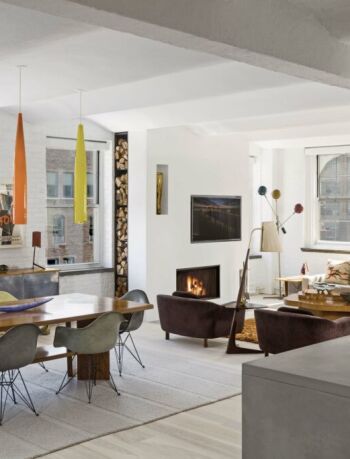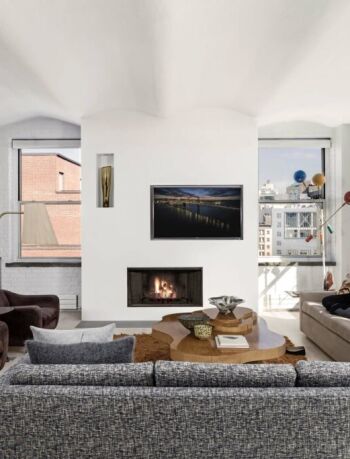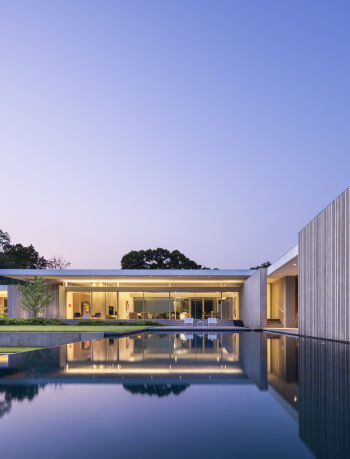

Preston Hollow Residence | Dallas, Texas
The Preston Hollow House blurs the lines between indoors and out. A floating pavilion roof hovers over the interior and exterior spaces while sliding glass panels and corrugated concrete walls define its courtyards. The house is open and light-filled yet provides seclusion from the street.
“It’s right in the middle of the city, yet you really can’t perceive any other houses.”
– Scott Specht, principal architect
Water helps link the exterior and interior spaces. A narrow channel, punctuated by cascading terraces and a gentle waterfall near the main entry, flows through the house and into the swimming pool. At night, lighting within the stream casts changing patterns on the textured walls.
The concrete walls were cast using custom formwork that creates a corrugated appearance on one side while remaining smooth on the other. Unlike the brutalist architecture of the 1960s, however, the monolithic walls are countered by delicate steel columns, frameless windows, and flowing water.



